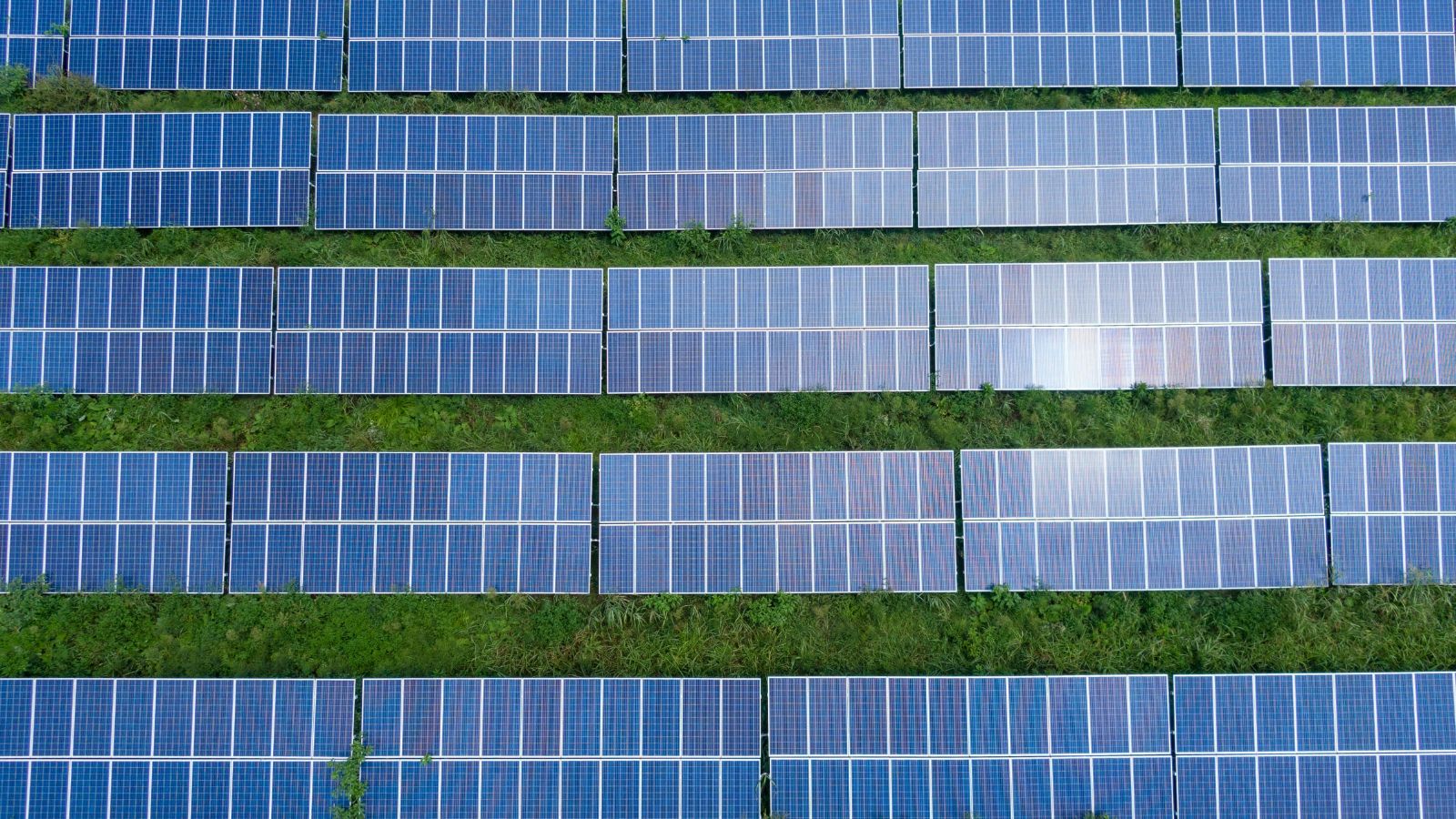COP30
No Growth in Fossil Power This Year as Solar Output Hits Record High
Global fossil fuel generation expected to flatline in 2025 for the first time since the pandemic, as record solar and wind growth meet all new electricity demand, according to Ember’s Q3 Global Power Report.

The world’s power sector is on the verge of a historic turning point, with no growth in fossil fuel generation expected in 2025 for the first time outside of a global crisis year, according to the latest Q3 Global Power Report by the energy think tank Ember.
Record-breaking increases in solar and wind power have met — and even exceeded — the rise in global electricity demand in the first three quarters of 2025, pushing fossil fuel use into stagnation.
“Record solar power growth and stagnating fossil fuels in 2025 show how clean power has become the driving force in the power sector,” said Nicolas Fulghum, senior data analyst at Ember. “Historically a growth segment, fossil power now appears to be entering a period of stagnation and managed decline.”
Solar Surges, Fossils Stall
Between January and September 2025, solar generation rose by 498 terawatt-hours (TWh) — up 31% year-on-year — marking the largest increase ever recorded over a nine-month period. Wind power added another 137 TWh, growing 7.6% compared to 2024. Combined, solar and wind generation expanded by 635 TWh, exceeding the global demand rise of 603 TWh (2.7%).
Nuclear output grew modestly by 33 TWh, while hydropower declined by 54 TWh due to unfavourable weather conditions. As a result, fossil fuel generation remained virtually unchanged, falling by 17 TWh (–0.1%) compared to the same period last year.
Ember forecasts that this balance will continue through the end of 2025, leading to the first year since the Covid-19 pandemic in which fossil generation does not increase despite global demand growth.
Clean Power Takes the Lead
The rise of clean power has reshaped the global electricity mix. In the first three quarters of 2025, wind and solar accounted for 17.6% of global electricity generation, up from 15.2% during the same period in 2024. Meanwhile, fossil fuels’ share fell from 58.7% to 57.1%.
All renewables combined — including hydro, solar, and wind — now supply 34.2% of global electricity, surpassing coal’s share for the second consecutive year.
China and India Tip the Global Balance
A fall in fossil fuel generation in China (–52 TWh, –1.1%) and India (–34 TWh, –3.3%) has been pivotal in keeping global fossil growth flat.
In China, the drop signals a structural shift, as fast-expanding solar and wind capacity met all new electricity demand.
In India, the decline is described as temporary, resulting from milder weather conditions that reduced cooling demand and allowed renewable generation to offset the slower rise in electricity use.
“China, the largest source of fossil growth, has turned a corner, signalling that reliance on fossil fuels to meet growing power demand is no longer required,” said Fulghum.
Demand Growth Decoupled from Fossil Fuels
Ember notes that 2025 is expected to record the sixth-largest increase in electricity demand in history — around 831 TWh — yet fossil generation remains flat. This marks the first time a significant rise in global demand has been met entirely by clean sources.
Prior to this year, falls in fossil generation occurred only during global downturns — in 2009 (financial crisis) and 2020 (pandemic lockdowns).
A Managed Decline Begins
Ember’s analysis concludes that fossil fuel power is entering a new phase of “managed decline,” driven by the accelerating deployment of clean energy and moderated electricity demand. The challenge, the think tank says, lies in sustaining renewable growth to achieve deeper cuts in fossil generation beyond 2025.
“Solar power has replaced fossil fuels as the dominant driver of growth in the power sector,” the report states. “The task now is to sustain this momentum in 2026 and beyond — not only to meet rising demand but to actively drive down fossil generation.”
COP30
From 6% to 16%: The Philippines Shows the World How Fast Climate Budgets Can Shift
In just four years, the Philippines has expanded its climate spending from PHP 282 billion to over PHP 1 trillion — one of the fastest fiscal shifts anywhere in the world.

Governments across the world are beginning to rethink the way national budgets are designed, moving away from traditional fiscal planning and toward systems that integrate climate considerations directly into spending decisions. A new comparative review of global green-budgeting practices reveals a trend that is gathering momentum: more countries are using their budgets as climate-governance tools. But the pace of progress varies sharply between advanced economies and emerging markets.
The Rise of Climate-Conscious Budgets
Countries such as France, Ireland, Mexico and the Philippines provide some of the clearest examples of how climate priorities are reshaping national expenditure. France has increased its identified climate-positive budget from €38.1 billion in 2021 to €42.6 billion in 2025, while Ireland expanded its environmental allocations from €2 billion (2020) to €7 billion (2025). Mexico’s transformation has been even more rapid: climate-related expenditures rose from MXN 70 billion (2021) to MXN 466 billion (2025) — a six-fold increase.
A Sudden Surge in the Philippines
Nowhere is the shift more dramatic than the Philippines. After embedding climate budget tagging across its ministries, the country’s climate budget expanded from PHP 282 billion in 2021 to more than PHP 1 trillion in 2025, raising its share of the national budget from 6% to 16%. The reform forced ministries to assess thousands of programmes through a climate lens, resulting in a shift toward resilient infrastructure, sustainable energy, water security, and climate-smart industries.
Advanced Economies Move Beyond Tagging
While emerging economies are scaling up climate allocations, advanced economies are integrating climate metrics deeper into fiscal systems. Canada’s “climate lens” requires greenhouse-gas and resilience assessments for major infrastructure projects before funding is approved. Norway links its annual budget to its Climate Change Act and long-term low-emission strategies. Germany uses sustainability indicators to guide fiscal decisions, embedding climate considerations into macroeconomic planning.
These tools go beyond transparency. They force ministries to justify public spending not only in economic terms, but in climate terms — shifting budgets from accounting documents to steering instruments.
Despite this momentum, the analysis notes a persistent gap: many countries stop at tagging climate-related expenditures without linking them to outcomes or performance indicators. Tagging improves transparency, but on its own does not change investment decisions. Without climate-based appraisal and monitoring, high-emission infrastructure can still slip through national budgets unchallenged.
The Financing Challenge
For lower-income countries, the largest barriers are financial. High capital costs, limited fiscal room, and weaker public financial management systems restrict the scale of green budgeting reforms. Even when climate spending rises, sustaining these increases requires integrating climate metrics into medium-term fiscal frameworks — something only a handful of emerging economies have attempted.
Innovations Show What’s Possible
Some models offer a blueprint. Indonesia’s climate-tagging system feeds directly into its sovereign green sukuk framework, giving investors clear visibility over the use of proceeds. This loop — tagging, reporting, financing — demonstrates how governments can leverage green budgeting to unlock larger pools of private capital.
Still in Progress
The report concludes that the next frontier for green budgeting is integration: linking budget tagging, climate-lens project appraisal, performance-based reporting, and climate-aligned fiscal strategies. Done together, these tools allow budgets to become climate-governance instruments capable of guiding national transitions.
But the pace remains uneven. Some countries are racing ahead, while others are taking incremental steps. What is clear, however, is that climate-aligned public finance is no longer optional. As climate impacts intensify, the alignment of the world’s budgets will determine who adapts — and who is left behind.
COP30
Clean Energy Push Could Halve Global Warming by 2040, New Analysis Shows
A new Climate Action Tracker analysis shows that tripling renewables, doubling energy efficiency and cutting methane could halve global warming by 2040

A rapid global shift to renewable energy, energy efficiency and methane cuts could halve the rate of global warming by 2040, dramatically altering the world’s climate trajectory, a new Climate Action Tracker (CAT) assessment finds.
The analysis shows that implementing the three core COP28 energy and methane goals—tripling renewable energy capacity, doubling energy efficiency improvements, and delivering steep methane cuts by 2030—would bring down projected warming from the current 2.6°C to 1.7°C by the end of the century.
Crucially, these actions would sharply slow near-term warming, reducing the pace of temperature rise by a third by 2035 and nearly half by 2040, compared to today’s rate of ~0.25°C per decade. This slowdown is critical not just for long-term climate goals but for immediate survival, the report stresses.
A Turning Point
The world is already struggling to cope with accelerating climate impacts. With ecosystems collapsing faster than species can adapt and communities facing worsening heatwaves, storms and crop failures, “catching up” on adaptation has become a global emergency.
CAT warns that under current policies, warming could continue rising throughout the century, leaving governments perpetually behind on adaptation planning. But halving the warming rate would give both people and ecosystems a fighting chance to adjust.
A 0.9°C Improvement in the Global Outlook
If all countries implement the three goals, the resulting emission cuts—14 GtCO₂e by 2030 and 18 GtCO₂e by 2035—would reduce expected warming this century by 0.9°C, one of the most significant improvements since the Paris Agreement.
“This is the single biggest step governments can take this decade, using goals they have already negotiated and agreed to,” the report notes.
Where the Reductions Come From
- Tripling renewables: ~40% of total emission reductions
- Doubling energy efficiency: ~40%
- Methane cuts: ~20%, but delivering disproportionate warming benefits due to methane’s strong short-term impact
Finance Is the Missing Link
The report underscores that technology is not the barrier—finance is. Many emerging economies cannot deploy renewables or upgrade grids at the necessary pace without scaled-up international support.
Still, the authors say the pathway is feasible and grounded in technologies already available at commercial scale.
While the world is almost certain to overshoot 1.5°C by the early 2030s, the duration and magnitude of that overshoot will determine future levels of loss and damage. Delivering the COP28 energy and methane goals, the report concludes, is the most powerful tool the world currently has to limit that overshoot and avoid runaway climate impacts.
COP30
Health Systems ‘Unprepared’ as Climate Impacts Intensify, Experts Warn at COP30
India will require $643 billion between now and 2030 to adapt to climate change under a business-as-usual scenario

On Health Day at COP30 (November 13), global health and climate experts warned that the world is dangerously underprepared for the accelerating health impacts of climate change, calling for a dramatic scale-up of adaptation finance to protect vulnerable populations.
Speaking at a press conference hosted by Regions4, the Global Climate & Health Alliance and CarbonCopy, leaders from research institutions and national governments said climate-linked health threats — from extreme heat to wildfire smoke — are rising sharply while funding remains “colossally” insufficient.
“Each year, more than half a million lives are lost due to heat, and over 150,000 deaths are linked to wildfire smoke exposure,” said Dr. Marina Romanello, Executive Director of the Lancet Countdown. “Health systems, already stretched and underfunded, are struggling to cope with these growing pressures, and most are still unprepared for what is coming.”
Romanello added that despite the scale of the crisis, “only 44% of countries have costed their health adaptation needs, and existing finance falls short by billions. Without urgent investment, we will not be able to protect populations from escalating climate impacts.”
Adaptation gap continues to widen
The speakers described health-sector underfunding as a critical part of the broader adaptation finance gap. The latest UNEP Adaptation Gap Report estimates developing countries will need $310–365 billion annually by 2035, while the international community is still struggling to mobilise even the $40 billion Glasgow Pact Goal.
“With regards to finance, the reality is that we have a deficit that is quite colossal,” said Carlos Lopes, Special Envoy for Africa, COP30 Presidency. “Most of the efforts are from national authorities. What we need from international finance is that it must be complementary.”
Lopes cautioned that climate and health policy still operates in “multiple contested layers,” warning that unless these are aligned, “we risk losing coherence in our global response.”
Countries highlight urgent needs
Representatives from Bangladesh, Nigeria, India and Chile echoed concerns that adaptation finance is far from matching on-ground needs.
“Our adaptation financing for health is far below what is needed. The gap between what we require and what we receive is enormous,” said Md Ziaul Haque, Additional Director General, Ministry of Environment, Bangladesh. He urged multilateral finance entities to bring forward “concrete, holistic proposals that match the scale of the challenge.”
Nigeria’s challenges are equally stark. “In Nigeria, we are facing an additional 21% disease burden due to climate change… yet the adaptation finance we received in 2021–22 only met 6% of our needs,” said Oden Ewa, Commissioner for Special Duties and Green Economy Lead. He called adaptation finance a “lifeline that saves lives, strengthens communities, and protects economies.”
India outlines its adaptation burden
India also presented updated estimates of its climate adaptation needs. “India will require $643 billion between now and 2030 to adapt to climate change under a business-as-usual scenario,” said Dr. Vishwas Chitale of the Council for Energy, Environment & Water. He noted that India has already made “significant progress, spending $146 billion in 2021–2022 alone — 5.6% of GDP.”
New funding coalition signals momentum
Speakers highlighted the launch of the Climate and Health Funders Coalition, which has committed an initial $300 million annually.
“This is an encouraging signal… It shows that the world is beginning to recognise that protecting health must be at the centre of climate adaptation,” said Jeni Miller, Executive Director, Global Climate & Health Alliance.
Health at the centre of adaptation
Chile stressed the need for integrated policy approaches.
“It is vital to combine the efforts of different ministries — not only health but also transport, energy and food production — so that we generate co-benefits across sectors,” said Dr. Sandra Cortes, President of Chile’s Climate Change Scientific Committee. “A more integrated approach will allow us to improve public health, reduce emissions and create fairer, more sustainable development opportunities.”
As negotiators continue discussions in Belém, experts reiterated that adaptation finance — especially for health — must be just, equitable, accessible and prioritise the most climate-vulnerable nations. The recently proposed Belém Health Action Plan and the Global Goal on Adaptation are expected to serve as frameworks for strengthening health system resilience worldwide.
-

 Know The Scientist5 months ago
Know The Scientist5 months agoRemembering S.N. Bose, the underrated maestro in quantum physics
-

 Space & Physics4 months ago
Space & Physics4 months agoJoint NASA-ISRO radar satellite is the most powerful built to date
-

 Society5 months ago
Society5 months agoShukla is now India’s first astronaut in decades to visit outer space
-

 Space & Physics4 months ago
Space & Physics4 months agoNew double-slit experiment proves Einstein’s predictions were off the mark
-

 Society6 months ago
Society6 months agoAxiom-4 will see an Indian astronaut depart for outer space after 41 years
-

 The Sciences5 months ago
The Sciences5 months agoHow a Human-Inspired Algorithm Is Revolutionizing Machine Repair Models in the Wake of Global Disruptions
-

 Society6 months ago
Society6 months agoWhy the Arts Matter As Much As Science or Math
-

 Earth6 months ago
Earth6 months agoWorld Environment Day 2025: “Beating plastic pollution”








































